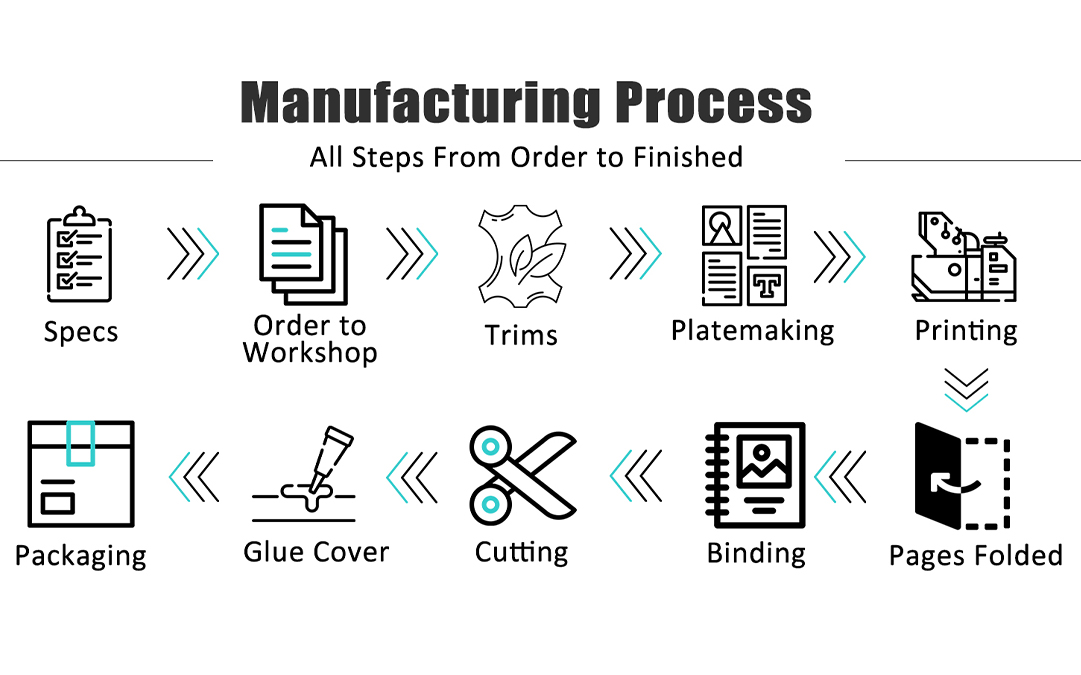How I Streamlined Our Production Process to Custom Planner Printing Minimize Costs and Maximize Efficiency
In today’s planner printing competitive business landscape, optimizing production processes is crucial to staying ahead. Over the past year, I embarked on a journey to streamline our production process, aiming to minimize costs and maximize efficiency. Here’s a detailed account of the strategies I implemented and the remarkable results we achieved.
1. Assessing Planner Printing Current Processes
The first step in our optimization journey was to assess our current production processes thoroughly. I began by mapping out every step, from raw material procurement to the final product delivery. This detailed analysis helped me identify bottlenecks, inefficiencies, and areas where delays were most frequent. Involving team members from different departments was essential in this phase. Their insights provided a holistic view and ensured no detail was overlooked. This comprehensive assessment formed the foundation for implementing effective changes and set us on the right path toward achieving our goals.
2. Implementing Lean Manufacturing Principles
Once I had a clear understanding of our processes, I turned to lean manufacturing principles. Lean manufacturing focuses on eliminating waste and optimizing workflows. One of the key techniques we adopted was Just-In-Time (JIT) production, which significantly reduced our excess inventory and associated holding costs. By producing only what was needed when it was needed, we minimized waste and enhanced our ability to respond to customer demands quickly. Additionally, we focused on reducing waiting times and streamlining movement within our production area. This resulted in a more efficient, flexible, and responsive production process.
3. Automating Planner Printing Repetitive Tasks
Automation played a pivotal role in enhancing our production efficiency. I identified repetitive and time-consuming tasks that were prone to human error and could be automated. Tasks such as assembly line operations and quality inspections were prime candidates for automation. By investing in advanced automation technologies, we increased our production speed and consistency. This shift allowed our workforce to focus on more complex and creative tasks, leading to higher productivity and job satisfaction. Automation not only improved our output but also ensured higher quality and reduced error rates.
4. Enhancing Workforce Training and Development
To further improve efficiency, I prioritized workforce training and development. A well-trained workforce is crucial for the smooth operation of any production process. We developed comprehensive training programs to ensure all employees were skilled and knowledgeable about the latest production techniques and technologies. Continuous development opportunities, such as workshops and certifications, kept our team updated on industry best practices. An empowered and well-trained workforce is more productive, motivated, and capable of identifying and solving production issues proactively. This investment in our people paid off significantly in terms of improved efficiency and morale.
5. Optimizing Planner Printing Supply Chain Management
Optimizing our supply chain management was another critical step in streamlining our production process. I worked on establishing stronger relationships with our suppliers to ensure the timely delivery of high-quality materials. Implementing an efficient inventory management system helped us maintain optimal stock levels and reduce storage costs. By closely monitoring and adjusting our supply chain processes, we minimized disruptions and ensured a steady flow of materials needed for production. This optimization resulted in lower costs, fewer delays, and a more reliable production schedule.
6. Utilizing Data Analytics for Decision Making
Data analytics became an indispensable tool in our production optimization efforts. I leveraged data analytics to gain insights into our production metrics, such as cycle times, defect rates, and equipment performance. This data-driven approach allowed us to make informed decisions, predict potential issues, and implement corrective actions swiftly. By continuously monitoring key performance indicators (KPIs), we ensured that our production process remained efficient and aligned with our goals. Data analytics also helped us identify trends and patterns, enabling us to anticipate and prepare for future challenges.
7. Improving Planner Printing Communication and Collaboration
Effective communication and collaboration were essential for streamlining our production process. I implemented regular team meetings and used project management tools to keep everyone aligned and informed. Open communication channels encouraged team members to share ideas and feedback, leading to innovative solutions and improved processes. A collaborative environment fostered teamwork and ensured that everyone was working towards common objectives. By improving communication, we eliminated misunderstandings and increased our overall efficiency.
8. Investing in Planner Printing Advanced Technologies
Investing in advanced technologies, such as Internet of Things (IoT) devices and artificial intelligence (AI), significantly boosted our production efficiency. IoT devices provided real-time monitoring and control of our production equipment, reducing downtime and maintenance costs. AI algorithms helped us optimize production schedules and predict maintenance needs. These technological advancements allowed us to operate more efficiently and stay ahead of our competitors. By embracing cutting-edge technologies, we improved our production processes and gained a competitive edge in the market.
9. Standardizing Planner Printing Processes and Procedures
Standardizing processes and procedures was another effective strategy in our production optimization efforts. I developed detailed standard operating procedures (SOPs) for each production task to ensure consistency and quality. Regular audits and reviews of these SOPs helped us identify areas for improvement and keep our processes up to date. Standardization reduced variability and errors, resulting in a more reliable and efficient production process. By adhering to standardized procedures, we maintained high quality and efficiency across all production stages.
10. Planner Printing Emphasizing Quality Control
Finally, I placed a strong emphasis on quality control throughout the production process. Implementing rigorous quality control measures at each stage helped us detect and address issues early, preventing costly rework and ensuring high-quality products. Continuous improvement programs, such as Six Sigma, enabled us to systematically eliminate defects and improve overall product quality. By prioritizing quality, we not only reduced costs but also enhanced customer satisfaction and loyalty. Our commitment to quality control ensured that we delivered products that met or exceeded customer expectations.
Conclusion
Streamlining our production process was a comprehensive and multifaceted effort that involved assessing current processes, implementing lean principles, automating tasks, enhancing workforce training, optimizing supply chain management, utilizing data analytics, improving communication, investing in advanced technologies, standardizing procedures, and emphasizing quality control. Each of these strategies played a crucial role in minimizing costs and maximizing efficiency. The results have been remarkable, with significant improvements in productivity, quality, and customer satisfaction. By continuously refining and optimizing our processes, we have positioned ourselves for long-term success in a highly competitive market.
Contact Us: Ms. Rimo Lau WhatsApp Me
Whatsapp: 0086 18336352791 – WeChat&Phone
Website: www.fullcolorprintstationery.com
E-Mail: [email protected]





